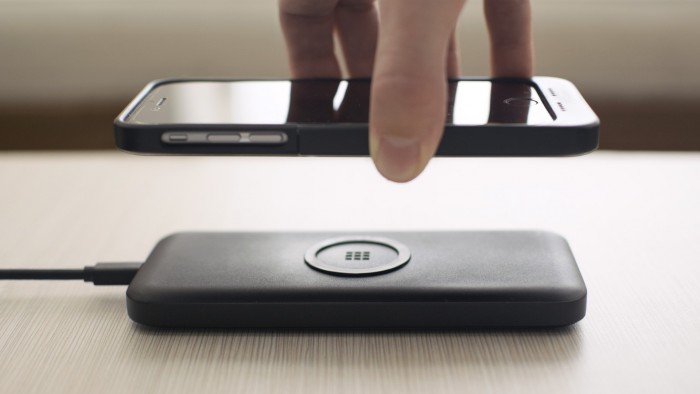Application of Magnets in Wireless Power Transfer
The method of charging batteries built-in electronic devices through contactless wireless power transfer is rapidly spreading. So in this article, let's take a look at the application of magnets in wireless power transfer.
 Application of Magnets in Wireless Power Transfer
Application of Magnets in Wireless Power Transfer
There are many wireless charging methods, but the current mainstream methods are electromagnetic induction and magnetic resonance which use magnetic coupling for power transmission. Electromagnetic induction and magnetic resonance wireless charging use the magnetic field generated by the receiving and transmitting coils to transmit power in a non-contact manner.
Electromagnetic Induction Wireless Charging
Most of the wireless mobile phone chargers currently on the market are electromagnetic induction type. Electromagnetic induction wireless charging has been widely used in electric shavers, electric toothbrushes, mobile phones, and other products. Its advantages are simple principles and structure and low cost.
However, when the relative position and distance between the transmitter coil and the receiver coil become larger, the power transmission efficiency will drop rapidly. Therefore, the coils must maintain a relatively close distance, which is also the disadvantage of this technology.
Magnetic Resonance Wireless Charging
Magnetic resonance wireless charging is a method in which capacitors are inserted on the transmitting side and the receiving side to form an LC resonant circuit so that the resonant frequency of the transmitting side and the receiving side are aligned, and then power is transmitted.
The advantage of this method is that the distance between the coils can be enlarged, and at the same time, power can be transmitted even if the center between the coils is slightly offset. This charging method can simultaneously charge multiple mobile devices wirelessly.
The main magnetic materials used in the wireless charger are neodymium iron boron permanent magnets, nickel-zinc ferrite thin magnetic sheets, manganese-zinc ferrite thin magnetic sheets, and flexible ferrite magnetic sheets.
Various magnetic isolation sheets made of soft ferrite materials are used as the main components of wireless charging technology to increase the induced magnetic field and shield coil interference in wireless charging equipment.
Fixed-position wireless chargers generally use neodymium iron boron permanent magnets as positioning materials, and the terminal device needs to be placed in a fixed position to charge and maximize the charging efficiency. (Large wireless charging devices will use permanent ferrite materials instead of neodymium iron boron to reduce costs.)
The permanent magnet material used in wireless charging equipment, on the one hand, serves as a positioning device between the transmitter and receiver to facilitate rapid and correct positioning of the terminal device. On the other hand, it enhances the magnetic flux between the transmitter and receiver coils and improves transmission efficiency.
Conclusion
Thank you for reading our article and we hope it can help you to have a better understanding of the application of magnets in wireless power transfer. If you want to know more about magnets, we would like to advise you to visit Stanford Magnets for more information.
Stanford Magnets is a leading magnet supplier across the world, that has been involved in R&D, manufacturing, and sales of magnets since the 1990s. It provides customers with high-quality permanent magnets like neodymium magnets, SmCo magnets, AlNiCo magnets, and ferrite magnets (ceramic magnets) at a very competitive price.














